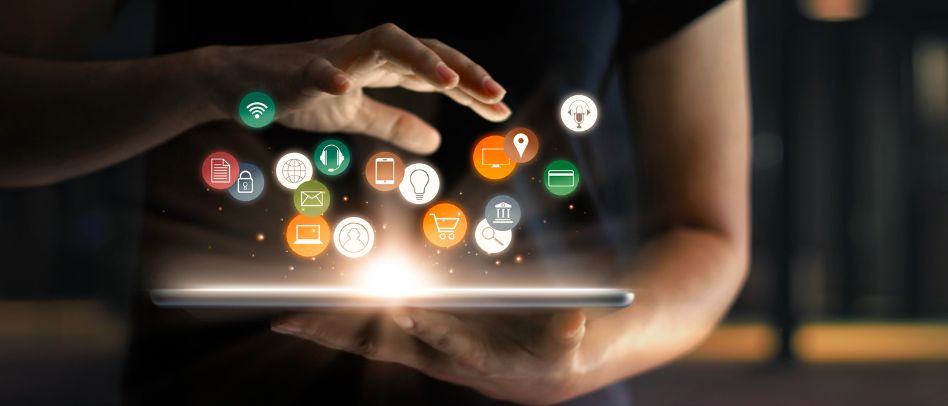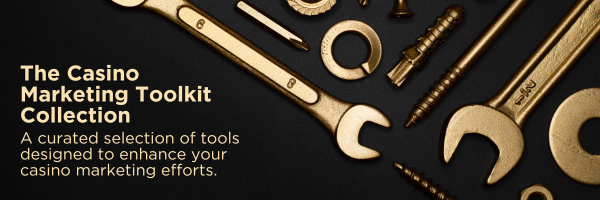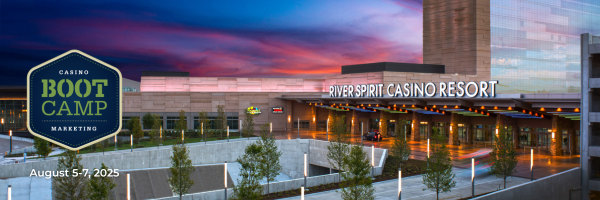When I first wrote about omnichannel marketing for casinos (for Casino Journal in 2018), the concept was still novel in our industry. Back then, simply having a website and social media presence alongside traditional marketing was considered progressive. In 2021, as the pandemic dramatically accelerated digital adoption, I updated that perspective to address how customer behaviors were rapidly changing and how casinos needed to adapt.
Today, we’re witnessing what I call “Omnichannel 2.0” – a fundamental transformation in how casinos connect with their customers. The journey from 2018 to today reflects not just technological advancement but a complete reimagining of the customer experience:
2018: Multichannel Beginnings
- Focus on establishing presence across channels
- Separate teams managing separate platforms
- Basic digital marketing alongside traditional efforts
2021: Pandemic-Accelerated Integration
- Urgent need for digital solutions during physical restrictions
- Beginning to connect online and offline experiences
- Growing emphasis on mobile engagement and contactless solutions
2025: True Omnichannel Orchestration
- Seamless journeys across all touchpoints
- AI-powered personalization at scale
- Real-time, behavior-driven engagement
- Experience-focused rather than channel-focused strategies
This evolution mirrors what’s happened across all consumer industries, but with unique implications for casinos, where the blend of physical experience and digital convenience creates challenges and extraordinary opportunities.
Today’s players don’t think in terms of channels – they think in terms of experiences. They don’t separate your mobile app from your slot floor, social media, or players club. They see one casino brand and expect one coherent experience.
The fundamental shift is clear: omnichannel marketing is no longer about connecting separate touchpoints. It’s about orchestrating seamless, personalized journeys that adapt to customer behavior and context in real-time. The casinos that understand and deliver on this expectation win the loyalty game in unprecedented ways.
Let’s explore how you can join them.
Players don’t think in terms of channels—they think in terms of experiences. Your brand must deliver a unified journey across all touchpoints.
The Evolution of Omnichannel – Then vs. Now
Then: Connecting Channels
In 2021, success meant ensuring your casino had a presence on multiple platforms. Marketing teams focused on improving websites, leveraging social media accounts, and sending email campaigns – often operating as separate initiatives with different goals and messaging.
Now: Orchestrating Journeys
Today, leading casinos understand that channels don’t exist in isolation. The focus has shifted to creating a unified experience where transitions between touchpoints are invisible to the customer. When a player receives an offer via email, they expect that same offer to be instantly available when they open your app or arrive at your property.
Then: Scheduled Marketing Pushes
Previously, casino marketers operated on calendars, planning campaigns and promotions weeks or months in advance and pushed them out according to a fixed schedule determined by the production and delivery timelines for physical mail.
Now: Real-time, Behavior-driven Engagement
The modern approach leverages data and automation to trigger communications based on player behavior. When a guest enters your property, plays a new game, or reaches a loyalty milestone, your marketing system responds instantly with relevant messaging and offers. When business declines, offers and messaging can be delivered within the workday.
Then: Broad Segmentation
Traditional casino marketing relied on basic segments like high-value players, local, seniors, or weekend visitors, often using the same offers for everyone within a segment.
Now: Individualization at Scale
With advanced analytics and AI, casinos can now deliver truly personalized experiences based on an individual’s playing preferences, visit patterns, and even contextual factors like weather or local events – all at scale.
The Modern Casino Customer – New Expectations
Today’s casino customer lives in a world of immediate gratification and personalized experiences. The pandemic accelerated digital adoption across all demographics, creating new expectations even among traditionally in-person-only gamblers.
Mobile-first, but experience-hungry: Modern players want the convenience of mobile interaction but still crave the excitement and social aspects of the casino floor. They expect their mobile experience to enhance their in-person visit, not replace it.
Seamless account experiences: Players now expect universal recognition across touchpoints. They’re frustrated when they must re-identify themselves or when their loyalty status isn’t immediately recognized across all interactions. Think about your own experiences having to do that when trying to do business with a service provider.
Real-time gratification: The days of “come back tomorrow” offers are fading. Players expect immediate recognition and rewards for their play and loyalty. Technology allows us to provide gratification at a trigger’s notice.
Personalization without invasiveness: Today’s casino guests want personalized experiences but are increasingly sensitive to privacy concerns. They expect casinos to know their preferences without crossing the line into “creepy” territory.
Consistent brand experience: Whether interacting with a slot attendant, opening an email, or engaging with social media, players expect the same brand voice, values, and quality of experience.
Essential Channels for Casino Omnichannel Success in 2025
Mobile Apps as Experience Hubs
Mobile apps have evolved beyond handheld-sized replicas of websites and simple loyalty trackers to become command centers for the entire casino experience. Casinos can now offer apps that allow guests to:
- View and redeem personalized offers
- Make dining and entertainment reservations
- Check in for hotel stays
- Access cashless gaming where legal
- Receive location-based notifications and offers while on the property
- Track loyalty progress in real-time
SMS and Push Notifications
Strategic, permission-based messaging remains crucial, but with higher expectations for relevance and timing. Successful casinos use these channels sparingly and with clear value propositions.
Strategic messaging has become sophisticated and contextually aware:
- Geofencing triggers that activate when players enter your property or competitors’ locations
- AI-powered send-time optimization that delivers messages when each individual is most likely to engage
- Two-way SMS capabilities allowing players to text for information, make reservations, or check point balances
- Dynamic content that updates based on player behavior (e.g., messages that change if a player hasn’t opened a previous notification)
- Opt-in value exchanges that provide immediate benefits for permission (e.g., “Text JOIN to receive 500 bonus points instantly”)
- Crisis communication capabilities that can instantly reach players during emergencies or unexpected closures
Email Marketing
Far from dead, email has evolved to become more sophisticated, leveraging behavioral triggers and personalization to deliver higher engagement rates. The key is moving beyond mass blasts to targeted communications that reflect the player’s relationship with your casino.
This renaissance of intelligent automation and personalization allows for:
- Behavioral trigger sequences that respond to player milestones (first visit, tier advancement, birthday)
- Dynamic content blocks that personalize imagery, offers, and language based on player preferences
- Interactive elements like gamification, polls, and clickable games that increase engagement
- AI-powered subject line and content optimization that improves open and click rates
- Progressive profiling that gradually builds player preferences through interaction
- Segmentation based on play patterns, not just demographics (e.g., “night owls,” “table game enthusiasts,” “weekend warriors”)
- Casino-specific engagement metrics that tie digital interaction to on-property behavior
Digital Wallets and Cashless Gaming
Where regulatory environments allow, digital wallets and cashless gaming solutions rapidly become essential components of the omnichannel experience, offering convenience and creating digital touchpoints even during traditional play.
These technologies create seamless payment experiences:
- Unified wallet systems that connect online accounts with on-property play
- Instant deposits and withdrawals between online and physical casino environments
- Loyalty integration that automatically tracks points across all transaction types
- Responsible gaming tools that allow players to set limits across all environments
- Biometric authentication for enhanced security and convenience
- Instant credit line access and digital markers, where legally permitted
- Real-time spending analytics gives players visibility into their activity
- Promotional balance integration, allowing players to use free play across channels
Social Media as Service and Community Channels
Social platforms have evolved from promotional channels to critical customer service and community-building tools. Players increasingly expect to resolve issues, ask questions, and engage with your brand through these platforms.
Social platforms have evolved from promotional channels to vital engagement hubs:
- AI-powered social listening tools that detect sentiment and escalate issues in real-time
- Social customer service with 24/7 response capabilities and service integration
- User-generated content strategies that showcase real player experiences and wins
- Private player communities that create exclusivity and relationship-building opportunities
- Live streaming capabilities for tournaments, special events, and property highlights
- Influencer programs that leverage local casino ambassadors for authentic engagement
- Social commerce features that allow direct booking of rooms, shows, and restaurants
- Localized content strategies that highlight community involvement and regional relevance
On-Property Digital Touchpoints
Kiosks, digital signage, and QR integrations bridge the digital and physical worlds, allowing for personalized experiences and offers during in-person visits.
Physical and digital experiences merge through strategically placed technology:
- Smart kiosks with biometric recognition that instantly personalize the interface
- Digital signage that changes based on nearby players and the time of day
- NFC/RFID technology that enables touchless check-in, restaurant reservations, and promotions
- Interactive wayfinding that guides players to their favorite games or amenities
- QR-enabled gaming that connects physical machines to digital experiences
- Smart tables that recognize players and their preferences automatically
- Digital drink ordering integrated with player cards and mobile apps
- In-room entertainment systems that extend the casino experience to hotel guests
- Augmented reality experiences that add digital layers to physical environments
- Facial recognition (where permitted) that enables frictionless service and security
Voice Assistants and Emerging Technologies
Forward-thinking casinos are already exploring how voice assistants can enhance the casino experience, from in-room hotel services to loyalty point checking and restaurant reservations.
Forward-thinking casinos are already exploring:
- In-room voice assistants that handle property information, reservations, and service requests
- Voice-activated loyalty services (“Alexa, how many points do I have?”)
- Voice commerce for booking restaurants, shows, and hotel stays
- Custom casino voice skills that provide property information and promotions
- Voice-directed wayfinding throughout the property
- Voice biometrics for secure authentication
- Multilingual voice support for international guests
- Integration with popular voice platforms like Alexa, Google Assistant, and Siri
- Voice-controlled amenities in hotel rooms and gaming areas
Bridging Technologies
These tools specifically connect online and offline experiences:
- Second-screen experiences during live tournaments and events
- QR-based promotions that transition players between physical and digital environments
- Beacon technology that delivers personalized messages as players move through the property
- Online-to-offline tracking that attributes property visits to digital marketing efforts
- Cross-channel reward redemption with consistent value propositions
- Unified customer service history accessible by all touchpoints
- Cross-channel appointment scheduling for casino hosts and VIP services
- Omnichannel event registration with digital and physical components
Each of these channel optimizations contributes to what industry experts call bridging online and offline experiences, where the goal is to make the transition between digital and physical environments invisible to the customer, creating a continuous journey.
Practical Implementation – Building Your Omnichannel 2.0 Strategy
Transforming your casino’s approach to omnichannel marketing requires methodical planning and execution. Here’s a step-by-step roadmap to help you move from theory to practice:
1. Audit Your Current Customer Journey
Start with real players:
- Select 3-5 players from different value segments and trace their last 90 days of interactions with your property
- Document every touchpoint, from website visits and email opens to on-property play and F&B transactions
- Identify gaps, redundancies, and disconnects in their experience
Practical audit tool: Create a simple journey mapping template with these columns:
- Touchpoint/Channel
- Customer Action
- Business Owner
- Systems Involved
- Data Captured
- Next Action Triggered
- Potential Friction Points
Quick win: Interview frontline staff about the most common player complaints regarding disconnected experiences. These insights often reveal immediate improvement opportunities.
2. Assess Your Technology Infrastructure
Conduct a technology stack assessment:
- Map all current marketing, gaming, and customer service platforms
- Document how (or if) they currently share data
- Identify which systems act as “sources of truth” for different data points
- Rate integration capabilities on a 1-5 scale
Strategic questions to answer:
- Do we need a Customer Data Platform (CDP) to unify our data?
- Can our current CRM effectively orchestrate cross-channel experiences?
- Are our player tracking and marketing automation systems integrated?
- What key data points are currently siloed?
Budget-friendly approach: Before investing in new technology, maximize existing systems through API connections and middleware solutions. Focus first on connecting your highest-value channels.
3. Establish Cross-Functional Teams
Create an omnichannel task force including:
- Marketing
- IT
- Gaming operations
- Hotel operations (if applicable)
- Players club
- Customer service
Meeting cadence and structure:
- Weekly sprints focused on specific journey improvements
- Monthly steering committee reviews of progress and priorities
- Quarterly executive updates with ROI metrics
Responsibility assignment matrix: Create a RACI chart (Responsible, Accountable, Consulted, Informed) for each customer journey stage to clarify ownership and accountability.
4. Prioritize Data Integration and Governance
Start with these critical data points:
- Player identity (unified player profile)
- Loyalty tier and point balance
- Recent play history
- Offer eligibility and redemption status
- Communication preferences and history
- On-property vs. digital behavior
Establish data governance protocols:
- Data quality standards and regular auditing
- Privacy and security requirements
- Data retention policies
- Access control based on role
Implementation tip: Begin with a “minimum viable data set” that enables your highest-priority use cases. Expand from there based on value and complexity.
5. Design Signature Omnichannel Experiences
Rather than trying to transform everything at once, focus on creating 2-3 signature experiences that showcase the value of omnichannel:
Example: “Welcome Back” Experience
- Player books a hotel stay online
- Mobile check-in notification 24 hours prior
- Personalized welcome message on the room TV upon arrival
- Push notification with the location of a favorite game when a player opens the app while at the property
- Free play is loaded automatically when a player inserts their card
- Host notification when a high-value player arrives
Example: “Milestone Celebration” Experience
- The player reaches a tier milestone during play
- Instant on-screen congratulations at the machine
- Push notification with a celebration offer
- Digital celebration shared with the player’s social media (with permission)
- Recognition by staff throughout the visit (through staff alerts)
- Personalized thank-you email with next tier benefits highlighted
6. Implement Testing Frameworks
A/B testing strategy:
- Test one variable at a time within customer journeys
- Establish clear control and test groups
- Define specific success metrics for each test
- Document learnings in a shared knowledge base
Example test scenario: Compare response rates between:
- Standard email offer vs. the same offer delivered via push notification when a player enters the property
- Measure redemption rates, time to redemption, and additional spend
Implementation tip: Create a formal testing calendar with hypothesis, methodology, timeline, and results tracking for each test.
7. Build Measurement Systems
Design omnichannel-specific KPIs:
- Cross-channel engagement rate
- Channel transition completion rate
- Omnichannel player value (compared to single-channel)
- Journey completion metrics
- Time to resolution across channels
- Offer redemption by channel and sequence
Implementation tools:
- A custom dashboard that pulls from multiple data sources
- Weekly scorecard for executives
- Visual journey analytics that show drop-off points
Start small: Begin by measuring one complete journey (e.g., from digital acquisition to first on-property visit to retention campaign engagement).
8. Create a Phased Rollout Plan
90-day sprint approach:
- Phase 1: Data foundation and initial journey mapping (30 days)
- Phase 2: First signature journey implementation (30 days)
- Phase 3: Measurement and optimization (30 days)
- Evaluate, learn, and plan the next 90-day cycle
Risk mitigation:
- Start with a pilot player segment
- Establish fallback procedures for each new process
- Create contingency plans for technology failures
Quick win: Begin with a simple journey improvement that delivers immediate player value, such as unifying offer redemption across digital and physical environments.
9. Develop Organizational Capabilities
Essential team skills to develop:
- Journey mapping and service design
- Data analysis and interpretation
- Cross-functional collaboration
- Agile project management
- Marketing technology expertise
Training resources:
- Cross-training between digital and traditional marketing teams
- Shadowing programs between departments
- External workshops and certification programs
- Vendor-provided training on platform capabilities
Structural consideration: Consider reorganizing teams around customer journeys rather than channels. For example, create teams focused on acquisition, onboarding, growth, and retention journeys instead of email, social, and direct mail teams.
10. Continuous Improvement Process
Implement a formal review cycle:
- Weekly: Operational metrics and issue resolution
- Monthly: Journey performance and optimization
- Quarterly: Strategic review and investment planning
- Annually: Capabilities assessment and roadmap development
Voice of customer program:
- Regular player feedback sessions
- Journey-specific surveys
- Mystery shopping across channels
- Real-time feedback collection at critical touchpoints
Learning agenda: Maintain a prioritized list of questions about player behavior that need answers to improve your omnichannel strategy
By following this implementation roadmap, you can transform your casino’s approach to omnichannel marketing in manageable stages. Remember that true omnichannel excellence is a continuous journey, not a destination. The most successful operators approach it as an ongoing process of refinement and innovation guided by real player needs and behaviors.
The casinos seeing the greatest ROI from omnichannel aren’t necessarily those with the biggest technology budgets. They’re obsessively focused on removing friction from their player journeys, one touchpoint at a time.
Winning the Omnichannel Game
The competitive advantage of actual omnichannel orchestration is clear. Casinos that deliver seamless, personalized experiences across all touchpoints are seeing higher engagement, increased loyalty, and a greater share of wallet from their players.
Emerging technologies like augmented reality, predictive analytics, and increasingly sophisticated AI will continue to transform what’s possible in casino marketing. But the fundamental principle remains the same: winning isn’t about being everywhere – it’s about being meaningful everywhere.
The casinos that will thrive in this new era view omnichannel not as a marketing strategy, but as a business philosophy centered around the player experience. As one industry leader says, “Omnichannel success isn’t about technology. It’s about understanding what your players want – and delivering it faster and better than anyone else.”
Is Your Omnichannel Strategy Ready for 2025?
- Can players move between online and on-property seamlessly?
- Are your messages personalized based on behavior, not just demographics?
- Do you have a single view of the customer across all channels?
- Can you deliver real-time offers based on current context?
- Are you measuring success across the entire customer journey?
Want to audit your casino’s omnichannel marketing strategy? Let’s talk.





Recent Comments